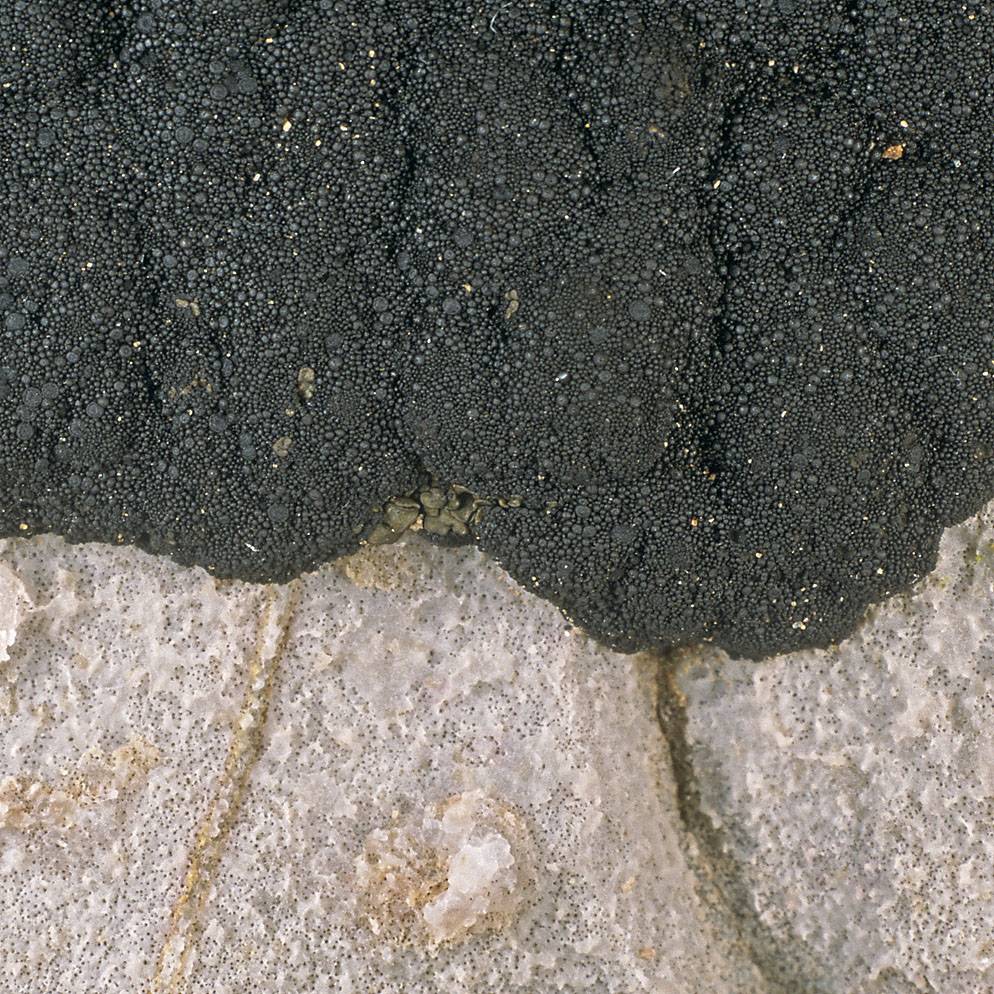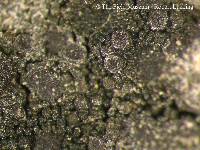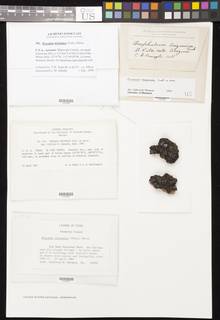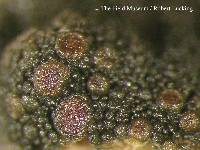
Consortium of Lichen Herbaria
- building a Global Consortium of Bryophytes and Lichens as keystones of cryptobiotic communities -
- Home
- Search
- Images
- Species Checklists
- US States: O-Z >
- US National Parks
- Central America
- South America
- US National Parks
- Southern Subpolar Region
|
|
|
|
Family: Lichinaceae
|
Nash, T.H., Ryan, B.D., Gries, C., Bungartz, F., (eds.) 2007. Lichen Flora of the Greater Sonoran Desert Region. Vol 3. Thallus: granulose-crustose to minutely dwarf-fruticose, small to spreading and covering several cm2; forming ±pulvinate cushions; individual cushions 2-10 mm wide, 1-10 mm high, finally bulging, composed of erect, furcate, cylindrical to club-shaped branches; branches dull, dark greenish-brown to black, epruinose to strongly grayish pruinose, 0.3-0.5(-0.8) mm long, 0.05-0.15 mm wide, tips often swollen, to 0.25 mm wide; anatomy: homoiomerous, paraplectenchymatous with dense network of short-celled hyphae upper surface: usually grayish pruinose, sometimes with bluish tinge, dull, rarely black isidia: absent, but the small branches may appear isidioid lower surface: concolorous, attached by often abundant, weft-like rhizohyphae Apothecia: terminal, 0.25-0.4 mm wide, disc: plane and open, black but reddish brown when moist, thalline margin persisting, c. 50-75 µm wide, usually somewhat prominent; proper exciple: lacking or very thin, 2.5-5(-10) µm thick, formed by anastomosed, ramified hyphae epihymenium: yellowish brown hymenium: hyaline or pale yellow, up to 125 µm tall, IKI-; subhymenium: hyaline, IKI+ pale blue, elongated as a stipe asci: narrowly clavate, thin walled, IKI-, covered by a gelatinous, non-amyloid sheath, c. 70-90 x 8-10(-15) µm, 8-spored ascospores: uniseriate, more rarely biseriate, hyaline, simple, broadly ellipsoid, small, 7.5-10 x (5-)7-8 µm Pycnidia: immersed, globose, 100-150 µm wide; wall: finally convoluted conidia: small, ellipsoid to cylindrical, c. 3 x 1 µm Spot tests: all negative Secondary metabolites: none detected. Substrate and ecology: on thin soil crusts over limestone, also along sand-filled limestone rock fissures, in open desert situations World distribution: SW North America, an uncertain record from Socotra Sonoran distribution: southern Arizona and California, Sonora, and Chihuahua. Notes: Peccania arizonica is quite distinctive due to its growth form and thallus coloration. It cannot be mistaken for typical species of Peccania because it lacks the conspicuous reddish brown color in the upper hymenium, lacks the large, sigmoid conidia, the heteromerous thallus anatomy with a central hyphal strand, the deep blue staining of the hymenium with iodine, and the clavate asci with a distinct gelatinous cap. Consequently, the species will eventually be excluded from Peccania. In his diagnosis Herre writes "Peccania arizonica (Tuck.) Herre" and makes a reference to "Tuck. in litt. 1884". As far as we know there is no publication by Tuckerman, wherein he describes Peccania arizonica. So, we assume Herre wanted to acknowledge that Tuckerman first reccognized this new species by giving him full authorship. But there is apparently no basionym attributable to Tucker-man. Thus, it seems that Herre was the first to provide a valid dignosis and designate a type for Peccania arizonica and that the best nomenclatural solution is to write the authors as "Tuck. Ex Herre". |
Powered by Symbiota


















